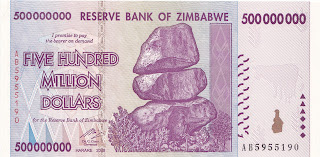1. SEBI had issued a circular (reference no. SEBI/MRD/SE/Cir-7/2004) on January 14, 2004 on disclosures of details of “bulk” deals with a view to impart greater transparency to the market on such transactions executed on the stock exchanges. In terms of paragraph 1.1 of that circular, a “bulk” deal constituted of “all transactions in a scrip (on an exchange) where total quantity of shares bought/sold is more than 0.5% of the number of equity shares of the company listed on the exchange”. Thus the quantitative limit of 0.5% could be reached through one or more transactions executed during the day in the normal market segment
2. There is however a felt need of the market to execute large trades through a single transaction easily without putting either the buyer or the seller in a disadvantageous position. In order to facilitate execution of such large trades, the stock exchanges are being permitted to provide a separate trading window. A trade, with a minimum quantity of 5,00,000 shares or minimum value of Rs.5 crore executed through a single transaction on this separate window of the stock exchange will constitute a “block deal” as distinguished from “bulk” deal defined earlier.
3. A “block” deal will be subject to the following conditions :
a. The said trading window may be kept open for a limited period of 35 minutes from the beginning of trading hours i.e. the trading window shall remain open from 9.55 am to 10.30 am.
b. The orders may be placed in this window at a price not exceeding +1% from the ruling market price/previous day closing price, as applicable.
c. An order may be placed for a minimum quantity of 5,00,000 shares or minimum value of Rs.5 crore.
d. Every trade executed in this window must result in delivery and shall not be squared off or reversed.
e. The stock exchanges shall disseminate the information on block deals such as the name of the scrip, name of the client, quantity of shares bought/sold, traded price, etc to the general public on the same day, after the market hours.
f. There is no change in regard to the disclosure of trade details of ”bulk deals” as specified in the earlier SEBI circular reference no. SEBI/MRD/SE/Cir -7/2004 dated January 14, 2004, and such disclosures shall be continued to be made by the stock exchanges to the general public on the same day after the market hours.
4. The stock exchanges shall ensure that all appropriate trading and settlement practices as well as surveillance and risk containment measures, etc., as presently applicable to the normal trading segment are made applicable and implemented in respect of the proposed special window also.
5. The stock exchanges are advised to
a. make necessary amendments to the relevant bye-laws, rules and regulations for the implementation of the above decision immediately.
b. bring the provisions of this circular to the notice of the member brokers/clearing members of the Exchange and also to disseminate the same on the website.
c. communicate to SEBI, the status of the implementation of the provisions of this circular in the Monthly Development Report for the month of September 2005.
6. This circular is being issued in exercise of powers conferred under Section 11 (1) of the Securities and Exchange Board of India Act, 1992, to protect the interests of investors in securities and to promote the development of, and to regulate the securities market.










